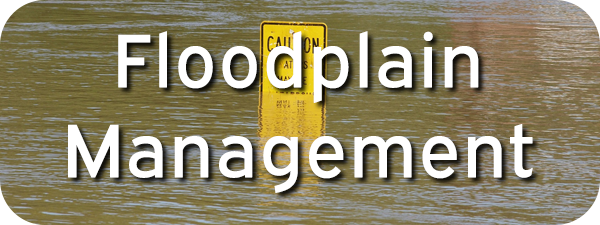
Lincoln County Floodplain Management
Lincoln County, Kansas has adopted Resolution No. 2023-17, in accordance with 44 CFR § 60.3(b), K.S.A. 12-766, and K.A.R. 5-44-1 through 5-44-7.
Summary of key points:
ARTICLE 1: Statutory Authorization, Findings of Fact, and Purposes
Section A: Statutory Authorization
- Draft regulations approved by the Chief Engineer, KDA–DWR on October 31, 2023.
- State law delegates authority to local governments to adopt floodplain regulations to protect public health, safety, and welfare.
Section B: Findings of Fact
- Special Flood Hazard Areas (SFHAs) in Lincoln County periodically inundate, causing threats to life, property, commerce, services, and the tax base.
- Losses are driven by cumulative floodplain development and vulnerable/insufficiently protected uses.
Section C: Statement of Purpose
- Restrict/prohibit uses that endanger life, safety, property, or increase flood heights/velocities.
- Require flood protection for vulnerable uses and public facilities during initial construction.
- Protect buyers from acquiring lands unsuitable for development due to flood hazards.
This resolution minimizes flood losses, maintains NFIP eligibility, and ensures compliance with federal and state rules.
ARTICLE 2: General Provisions
Section A: Lands to Which Resolution Applies. Applies county-wide to all lands designated as unnumbered A Zones on FIRM panels referenced in the FIRM Index effective December 21, 2023 (and future revisions). Development requires a floodplain development permit from the BOCC.
Section B: Compliance. All SFHA development must comply with this resolution and other applicable regulations.
Section C: Abrogation and Greater Restrictions. Stricter provisions in this resolution prevail where conflicts exist.
Section D: Interpretation. Minimum requirements, interpreted liberally in favor of the governing body.
Section E: Warning and Disclaimer of Liability. Standards are reasonable but do not guarantee safety nor create county liability.
Section F: Severability. Invalid portions do not affect the remainder.
ARTICLE 3: Administration
Section A: Floodplain Development Permit. Required for all construction/development (incl. manufactured/mobile homes) within Article 2 areas.
Section B: Floodplain Administrator. The Lincoln County Emergency Manager.
Section C: Duties and Responsibilities include:
- Application review for site safety/compliance.
- Verification of required federal/state/local permits.
- Evaluation of subdivisions and new development for flood safety.
- Permit issuance for approved applications.
- Notifying neighbors/KDA-DWR of watercourse alterations; providing evidence to FEMA.
- Maintaining flood-carrying capacity of altered/relocated watercourses.
- Recording lowest-floor elevations (incl. basements) and non-residential floodproofing elevations/certifications.
Section D: Permit Application must include:
- Site description and proposed work.
- Intended use/occupancy.
- Assessed and fair-market values.
- Existing BFE and proposed development elevation.
- Additional information as required by the Administrator.
- Plans/specifications.
- Signature of permittee/authorized agent with authority evidence.
ARTICLE 4: Provisions for Flood Hazard Reduction
Section A: General Standards.
- Permits for new/substantial/other improvements in unnumbered A Zones are subject to the conditions herein.
- Where FIS data is unavailable, use best available BFE/floodway data from credible sources.
- Construction/development (incl. manufactured/mobile homes, prefabricated structures) must include anchorage, flood-resistant materials, utility protection, and drainage/BFE compliance.
- Storage allowed only if secured against flood damage or readily removable upon warning.
- Nonconforming uses may continue subject to limits and floodplain requirements.
- Accessory structures (<=600 sq ft) may be at-grade and wet-floodproofed if specific criteria are met (case-by-case).
- Agricultural structures tied to production may be at-grade and wet-floodproofed under conditions.
- Hazardous material storage/handling sites must be outside SFHAs.
- Critical non-residential facilities must be elevated/floodproofed with access above the 500-year flood.
Section B: Specific Standards.
- Residential: lowest floor ≥ 1 ft above BFE.
- Non-residential: lowest floor ≥ 1 ft above BFE or floodproofed.
- Enclosures below lowest floor: openings to equalize hydrostatic forces.
- Floodway: no encroachments in designated regulatory floodways.
Section C: Manufactured/Mobile Homes.
- Install to minimize flood damage with elevation and anchorage.
- Outside parks/subdivisions in unnumbered A Zones: elevate ≥ 1 ft above BFE and anchor.
- In existing parks/subdivisions: elevate ≥ 1 ft above BFE.
Section D: Recreational Vehicles. Must meet criteria, or be on-site < 180 consecutive days, or be fully licensed and ready for highway use.
ARTICLE 5: Floodplain Management Variance Procedures
Section A: Appeal Board. Lincoln County Board of Commissioners serves as the Appeal Board.
Section B: Responsibility. Hears appeals of Administrator decisions.
Section C: Further Appeals. Decisions may be appealed to District Court.
Section D: Variance Criteria. Considers danger to life/property, necessity, and plan compatibility, among other factors.
Section E: Variances for Structures. May be granted when criteria are met (e.g., no suitable alternative location, no increase in flood risk, low damage potential).
Section F: Agricultural Structures. Additional conditions apply (wide floodplain, no alternative location, low risk).
Section G: Temporary Structures. Allowed with approved removal plan, permit compliance, and no-rise certification in regulatory floodways.
ARTICLE 6: Violations
- Administrator may enter property for compliance inspections with prior notice/posting.
- Development without permit/proof of compliance is a violation until corrected.
- Written notice includes hearing/correction instructions and deadlines.
- Violations (incl. variance conditions) are misdemeanors; fines up to $500 plus costs; legal action may be taken.
- Civil injunctive relief may compel removal; costs may be recovered by judgment.
ARTICLE 7: Amendments
Regulations/boundaries may be amended to align with the National Flood Disaster Protection Act of 1973. Changes require a public hearing with published notice ≥ 20 days in advance and will be shared with FEMA Region VII.
ARTICLE 8: Definitions (selected)
- 100-year Flood (Base Flood): 1% annual chance flood.
- Accessory Structure: Incidental to a principal structure on the same parcel.
- Administrator: Federal Insurance Administrator.
- Agency: FEMA.
- Floodplain: Land subject to inundation from overflow/runoff/subsidence.
- Floodplain Management: Measures to reduce flood damage.
- Floodway: Channel/adjacent lands needed to discharge base flood without undue rise.
- Freeboard: Elevation margin above BFE for uncertainty.
- Historic Structure: Listed/certified contributing structure.
- Substantial Damage: Restoration cost ≥ 50% of pre-damage market value.
- Variance: Community-granted relief from regulations.
- Water Surface Elevation: Floodwater height relative to a vertical datum.
For complete definitions and requirements, see the full resolution below.

